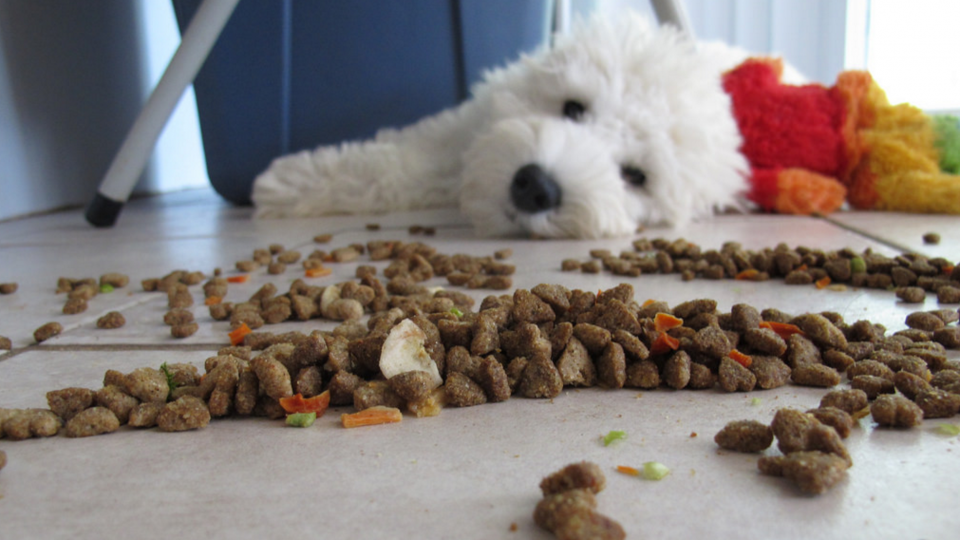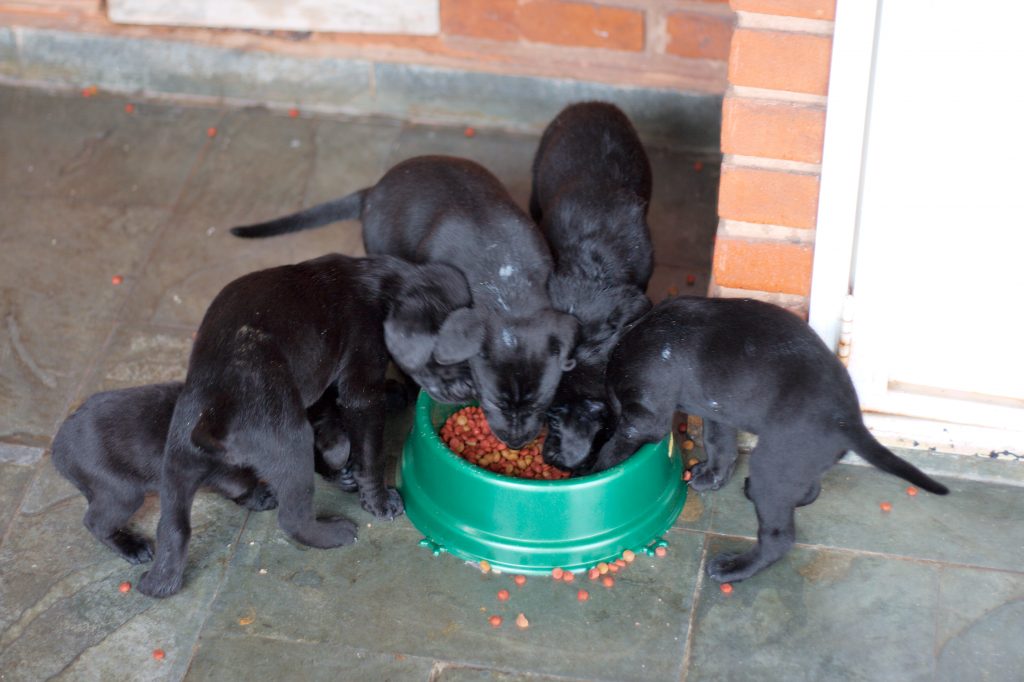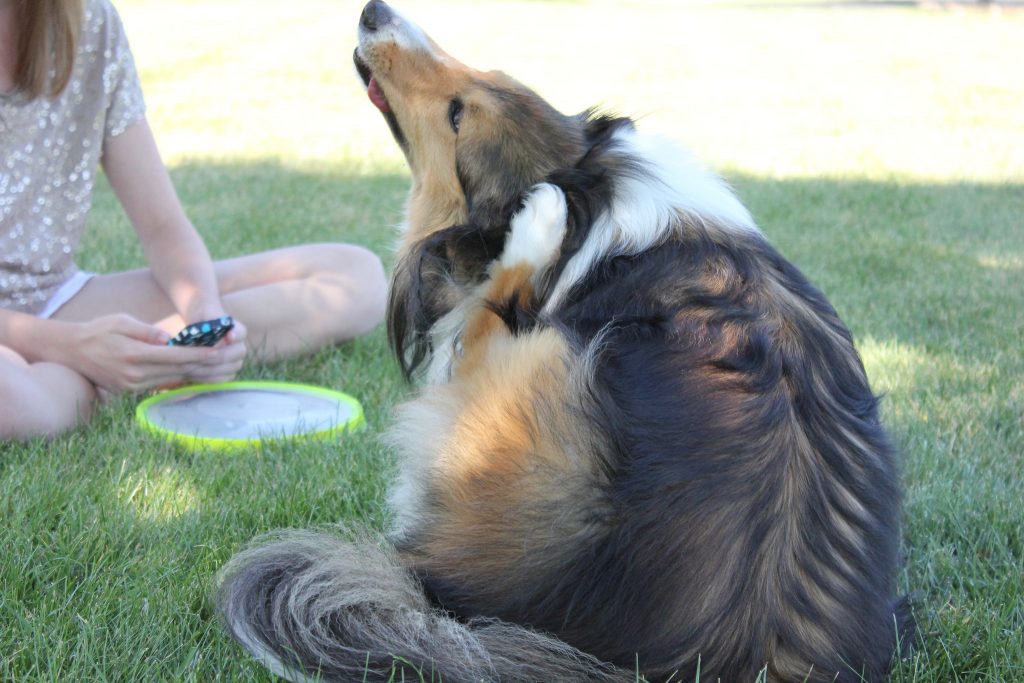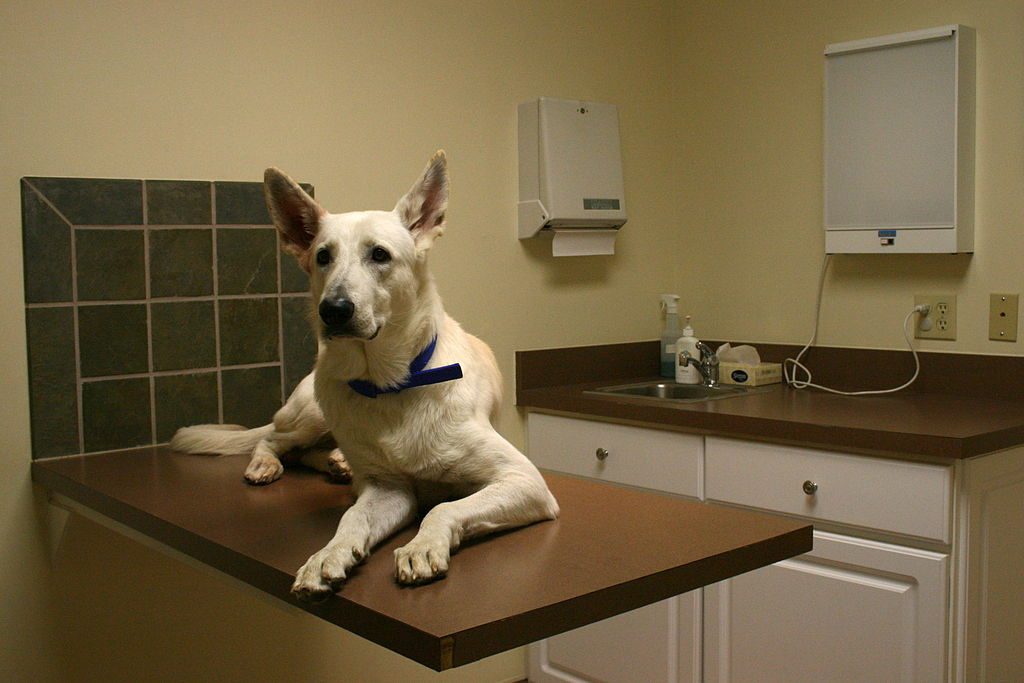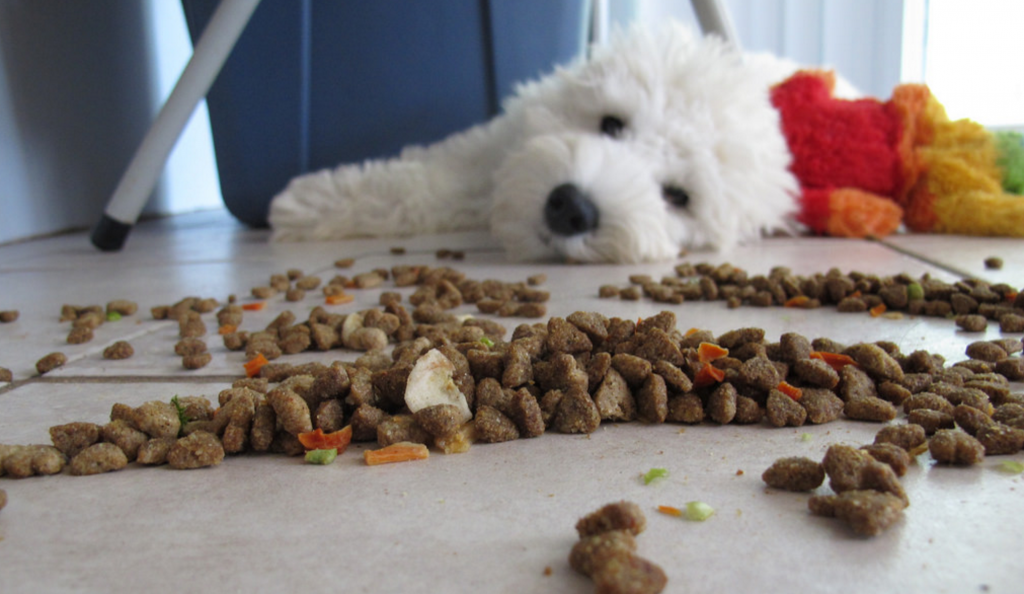If your dog has tummy trouble, the contents of the food bowl might be the problem. It could be time to think about switching food! There are good reasons to switch your dog’s food, and also good reasons to stick with the same thing. We talked to experts who explained why an owner might switch a dog’s food and the best way to do it.
Age
There are foods marketed to different age dogs: puppy, adult, and senior. Dr. Chris Miller, a veterinarian at AtlasVet in Washington D.C., says that in general any mass-produced food you buy at the store is suitable for any age dog.
“We recommend puppy food for younger dogs because it’s higher in calories and that helps compensate for growth rate,” he said. “You’ll want to transition to adult food because puppy food is higher in calories, and you want to avoid excess weight gain.”
Food for senior dogs will have fewer calories because those dogs tend to be less active, and it may contain glucosamine supplements for joints.
Upset Stomach
If your dog has diarrhea or vomiting, it may be due to diet. Miller says it’s important to address the issue one step at a time and narrow down what’s causing the indigestion.
“If your dog has an upset stomach and you start giving new foods, it becomes much harder to pin down what may be causing the problem,” he said. “Changing diet rapidly on a dog with an upset stomach can also aggravate the issue.”
Allergies
Some dogs will develop allergies to certain ingredients. Allergies can manifest themselves in different ways including diarrhea, vomiting, or skin issues. Betsy Hall, a Training Manager at All the Best Pet Care in Seattle, says a limited-ingredient diet can resolve allergy issues.
“If a dog has allergies, we steer people to foods with a single protein and a single carb,” Hall says. “The limited ingredients help us narrow down the possible allergens.”
Miller adds that hypoallergenic foods can contain novel proteins like rabbit and venison that a dog is less likely to have an allergic reaction to.
“A food transition due to allergies should happen gradually over a month or two until we can see if it’s working or not,” he says.
Medical Conditions
Dogs with medical conditions like diabetes or kidney disease may need special diets.
“Most dogs will be healthy on food you buy at the store, but in special situations a dog might have a condition that a vet can prescribe food for,” Miller says.
Weight Problems
Obesity is a widespread problem with dogs, and it can lead to a host of other medical issues.
“I often see owners who can’t tell that their dog is overweight,” Miller says. “Wet food can be a good tactic to encourage weight loss because it’s heavy in water content, so dogs feel full faster.”
Wet food has the added benefit of extra hydration.
“Dietary moisture is an important component in the health of a dog,” Hall says. “Your dog will be more hydrated eating wet food than it will be on dry food and water. Even adding just half a can a day can make a big difference.”
Food Recall
If your dog’s food is recalled, stop feeding it that type immediately. Miller says a recall most often affects only a specific flavor or type within a brand.
“A recall is rarely brand-wide, so try switching to a different flavor within that brand to minimize the change for your dog,” he says. “I’m a fan of bigger brands because they have strong quality control.”
Hall adds that it’s valuable to serve a variety of foods so that if a recall happens, you’re prepared.
“If the food you’ve been serving is suddenly unavailable, it’s valuable to have other options your dog is used to as a back up,” she says.
The U.S. Food and Drug Administration has a website dedicated to pet food recalls. The FDA also has additional resources on pet food labeling and safety.
Boredom
If you ate the same thing for every meal, every day, you might get bored. The same thing can happen to dogs!
“Dogs get bored with food just like people do,” Hall says. “Some breeds are pickier. I see a lot of Labradors that eat anything and everything, but I find smaller dogs like Chihuahuas and Shih Tzus can be more sensitive eaters.”
Miller says if your dog is happy and healthy on its current food, stick with it!
“Food change is the number one reason we see upset stomachs,” he says. “I discourage changing food too much because it can create problems.”
If you do plan to switch, a gradual transition is important.
“Adding digestive enzymes, prebiotics, or probiotics can be helpful for stomach issues or food transitions,” Hall says. “Start the introduction of new food slowly to give your dog’s gut time to adapt.”
